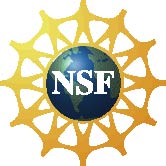Oecophoridae Overview
The
broad concept of Oecophoridae, as treated by Clarke (1941), Hodges (1974) and
others has been narrowed to include only two subfamilies: Oecophorinae and Stathmopodinae
(Hodges, 1998). The family lacks autapomorphies and has been defined by two
polymorphic parallelisms and one reversal: 1) second abdominal sternum with
a pair of venulae or a pair of venulae and a pair of apodemes, 2) abdominal
terga with or without spiniform setae, and 3) the hindwing with Rs and M1 separate.
The family also has the gnathos broadly fused with the tegumen and that is tapered
to a slender or rounded apex with the dorsomedial surface covered with small
dentate or slender projections. Oecophoridae are also characterized by strongly
recurved labial palpi.
Oecophoridae has
a worldwide distribution and is one of the largest families of Gelechioidea,
including more than 3,150 species in about 326 genera. Larvae have diverse feeding
habits with some feeding mainly on dead plant tissue and others in fruits and
flowers, as well some species being predatory on Homoptera.
Oecophorinae
Hodges (1998) defined
this subfamily by the abdominal terga lacking spiniform setae or having these
setae in a broad band. He noted that most characters were variable, but that
the labial palpus is often very slender and long.
Larvae feed mainly
on dead plant tissue, especially on leaf litter in Australia. Larvae have a
variety of habits, some living in portable cases, others tunneling into wood
or flowers, and some tying leaves. Pupation occurs in the larval shelter (Scoble,
1992).
Although this subfamily
occurs worldwide, it is the most diverse group of Lepidoptera in Australia (Common,
1990; Hodges, 1998). Oecophorinae includes about 3,000 species in 300 genera
(Hodges, 1998), although a large number of species in Australia and other regions
are undescribed.
Hofmannophila
pseudosptretella is a widespread pest of stored products, including grain,
dried fruit, seeds, and furs (Scoble, 1992).
Refererences: Clarke
(1941, 1963), Common (1990, 1994, 1997), Hodges (1974), Leraut (1989, 1993), Lvovskii (1981), Meyrick (1922), Patocka (1989), Stehr (1987), Toll (1964).
Stathmopodinae
The family group
name has been credited to Meyrick (1913) rather than Janse (1917), and this
taxon is sometimes given family status (Koster and Sinev, 2003). Hodges (1998)
defined this subfamily by the automorphy of the abdominal terga having spiniform
setae on their posterior margins. Additionally, the wall of the aedeagus has
a ventrodistal, sclerotized projection. The female genitalia have paired signa,
with sclerotized plates having a mesial, inwardly directed flange, and often
with secondary signa consisting of rows of conical projections that are directed
inwardly. Most species have slender wings and closely appressed scales on the
head and distinctive hind legs bearing whorls of stout setae (Scoble, 1992;
Hodges, 1998). Most species have raised hind legs when at rest, and a large
number are brightly colored and diurnal (Scoble, 1992).
Larvae have quite
variable habits, feeding on fruits and flowers, sporangia of ferns, dead plant
tissue, and as predators on scale insects, aphids, and eggs of spiders (Scoble,
1992; Hodges, 1998; Koster and Sinev, 2003). Some species are pests of cultivated
plants, e.g., persimmon and carob (Koster and Sinev, 2003).
Species in this
subfamily are pantropical/subtropical, especially diverse in the Afrotropical
and Indo-Australian Regions. The subfamily includes about 150 species in 26
genera (Hodges, 1998).
References: Common
(1990), Hodges (1978), Janse (1917), Kasy (1973), Meyrick (1913), Walsingham
(1889).



